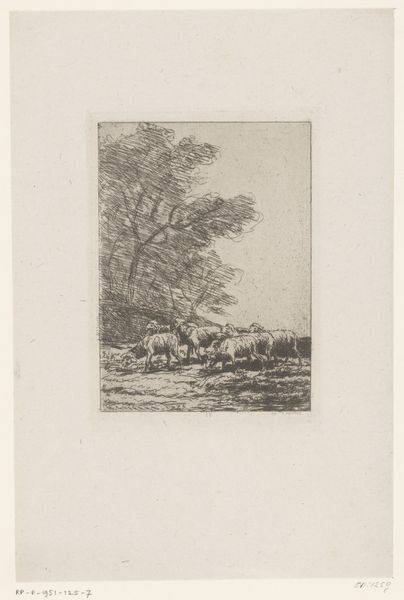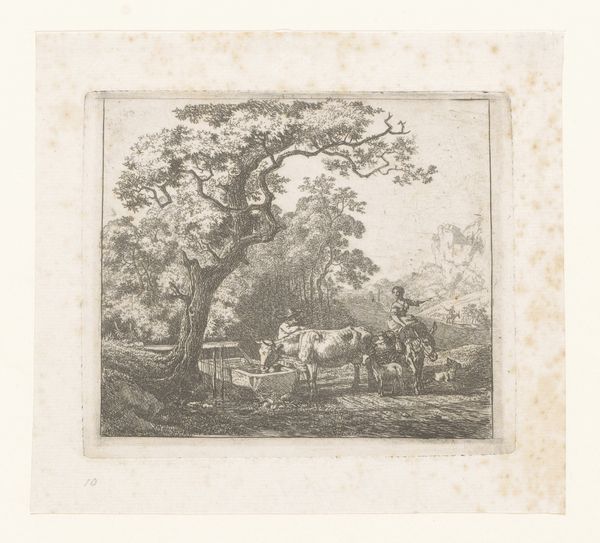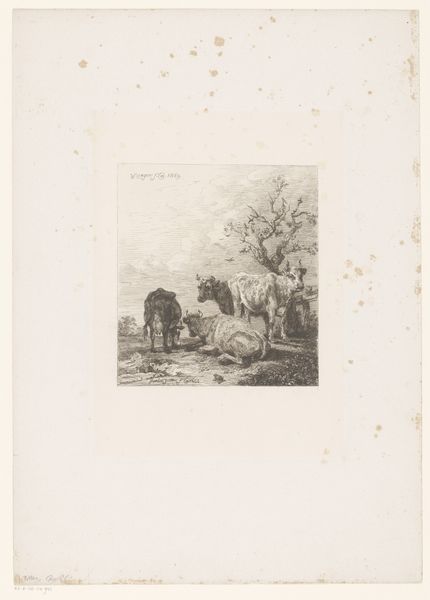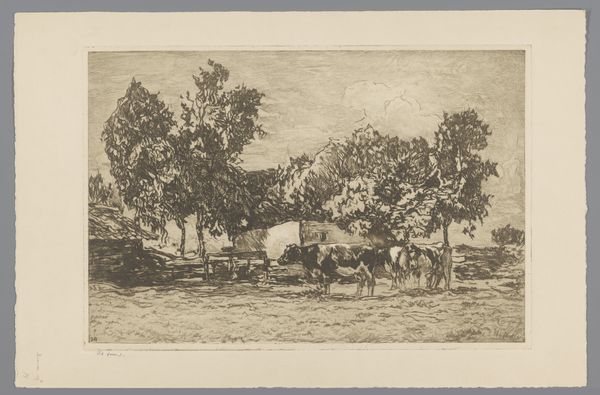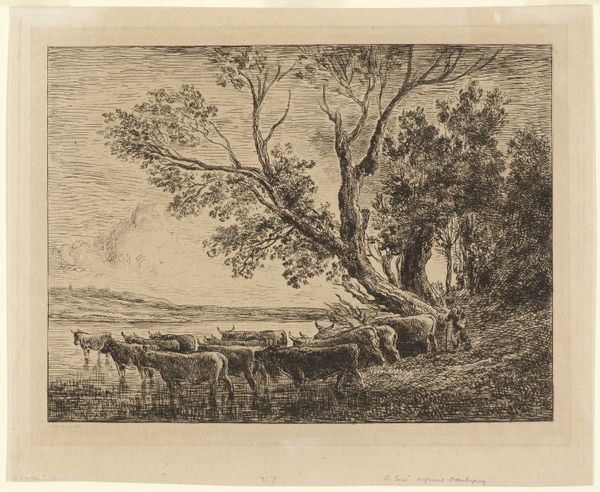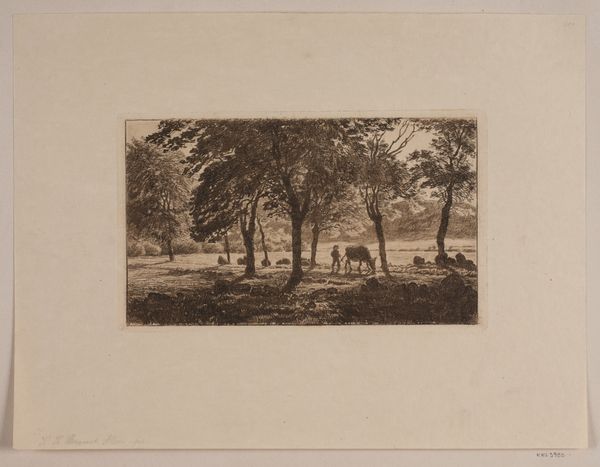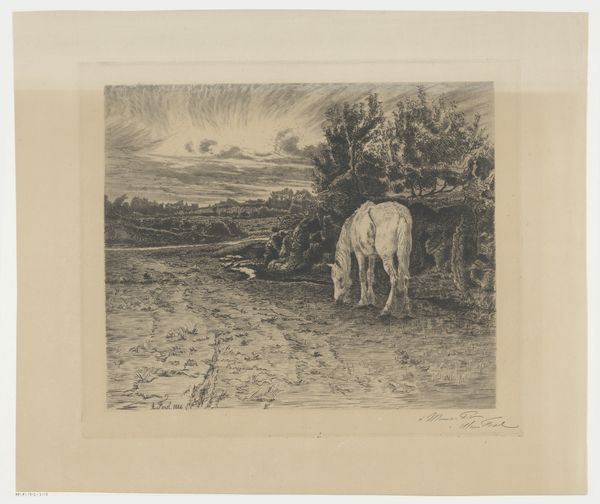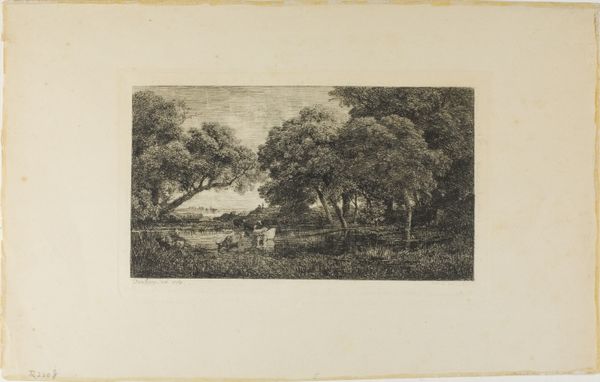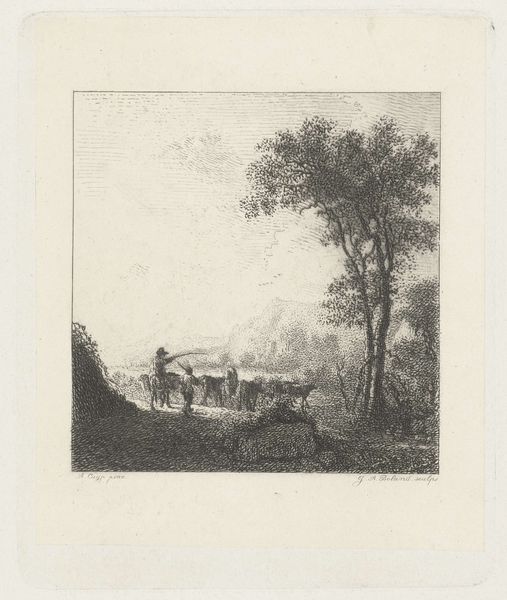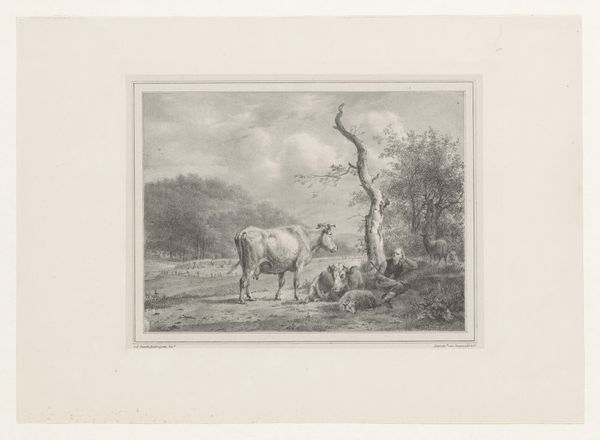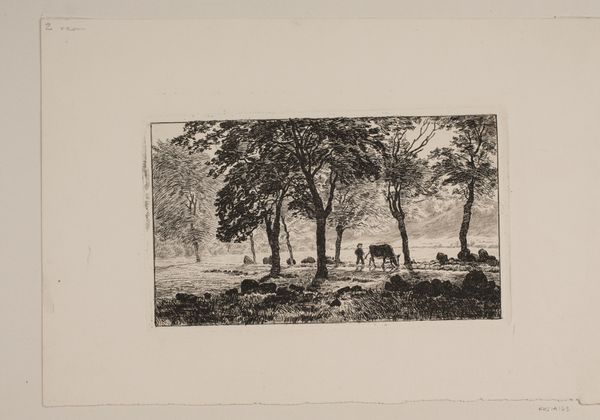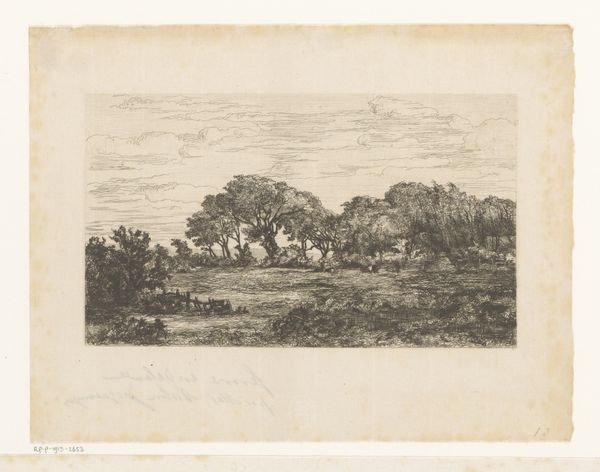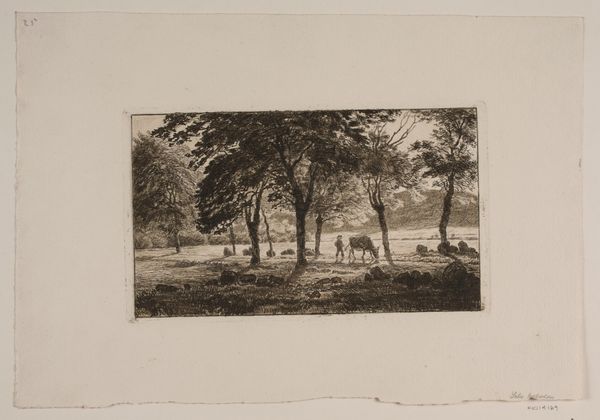
drawing, print, etching, paper
#
drawing
#
16_19th-century
# print
#
etching
#
landscape
#
paper
#
france
#
genre-painting
#
tonal art
#
realism
Dimensions: 235 × 188 mm (image); 260 × 198 mm (plate); 382 × 326 mm (sheet)
Copyright: Public Domain
Charles Jacque made this print, Cows at a Watering Place, using etching, a process that democratized image-making in the 19th century. The effect of the etching relies on the qualities of the metal plate. First, the plate is coated in a waxy, acid-resistant ground. Then, using a sharp needle, the artist scratches the design into the ground, exposing the metal. The plate is submerged in acid, which bites into the exposed lines. The longer the plate remains in the acid, the deeper and darker the lines will be. Here, you can see the resulting tonal variation. Look at the dark, bold lines of the trees against the fine hatching that defines the sky. Finally, the plate is inked and pressed onto paper, transferring the image. Prints like these were relatively inexpensive and widely available, making art accessible to a broader audience. Jacque’s choice of subject – the everyday life of farm animals – further connects this artwork to the realities of labor, and a market for pastoral imagery that was emerging in the 19th century. By focusing on the materiality and process, we recognize the social context embedded within this image.
Comments
No comments
Be the first to comment and join the conversation on the ultimate creative platform.
